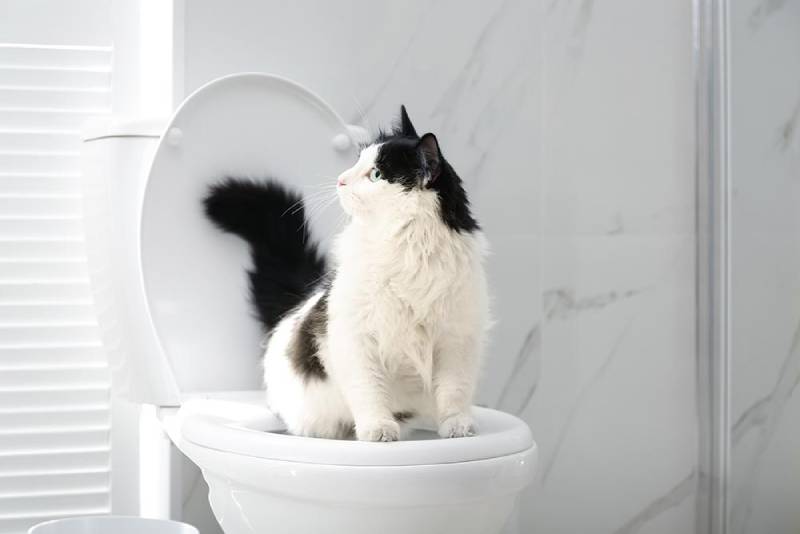This post down below about Can You Flush Cat Poo or Litter Down the Toilet? is exceptionally informative. You should read it.

Introduction
As feline owners, it's vital to be mindful of just how we take care of our feline close friends' waste. While it may appear convenient to flush feline poop down the bathroom, this method can have destructive repercussions for both the environment and human health.
Alternatives to Flushing
Fortunately, there are more secure and more responsible methods to throw away pet cat poop. Take into consideration the complying with alternatives:
1. Scoop and Dispose in Trash
One of the most common method of throwing away pet cat poop is to scoop it into a biodegradable bag and toss it in the trash. Make certain to use a dedicated trash scoop and throw away the waste without delay.
2. Usage Biodegradable Litter
Select naturally degradable feline litter made from products such as corn or wheat. These litters are environmentally friendly and can be securely taken care of in the garbage.
3. Bury in the Yard
If you have a yard, think about hiding feline waste in a designated location away from veggie yards and water sources. Make certain to dig deep adequate to avoid contamination of groundwater.
4. Mount a Pet Waste Disposal System
Invest in a pet dog garbage disposal system specifically created for feline waste. These systems make use of enzymes to break down the waste, lowering smell and environmental impact.
Health Risks
Along with ecological concerns, purging pet cat waste can additionally position health threats to human beings. Feline feces might include Toxoplasma gondii, a parasite that can cause toxoplasmosis-- a possibly severe disease, particularly for pregnant ladies and individuals with weakened body immune systems.
Ecological Impact
Flushing cat poop presents damaging pathogens and bloodsuckers right into the water system, posing a considerable danger to marine environments. These impurities can negatively influence aquatic life and compromise water high quality.
Final thought
Liable pet ownership extends beyond supplying food and sanctuary-- it additionally entails correct waste management. By avoiding purging pet cat poop down the commode and opting for different disposal approaches, we can lessen our ecological footprint and safeguard human health.
Why Can’t I Flush Cat Poop?
It Spreads a Parasite
Cats are frequently infected with a parasite called toxoplasma gondii. The parasite causes an infection called toxoplasmosis. It is usually harmless to cats. The parasite only uses cat poop as a host for its eggs. Otherwise, the cat’s immune system usually keeps the infection at low enough levels to maintain its own health. But it does not stop the develop of eggs. These eggs are tiny and surprisingly tough. They may survive for a year before they begin to grow. But that’s the problem.
Our wastewater system is not designed to deal with toxoplasmosis eggs. Instead, most eggs will flush from your toilet into sewers and wastewater management plants. After the sewage is treated for many other harmful things in it, it is typically released into local rivers, lakes, or oceans. Here, the toxoplasmosis eggs can find new hosts, including starfish, crabs, otters, and many other wildlife. For many, this is a significant risk to their health. Toxoplasmosis can also end up infecting water sources that are important for agriculture, which means our deer, pigs, and sheep can get infected too.
Is There Risk to Humans?
There can be a risk to human life from flushing cat poop down the toilet. If you do so, the parasites from your cat’s poop can end up in shellfish, game animals, or livestock. If this meat is then served raw or undercooked, the people who eat it can get sick.
In fact, according to the CDC, 40 million people in the United States are infected with toxoplasma gondii. They get it from exposure to infected seafood, or from some kind of cat poop contamination, like drinking from a stream that is contaminated or touching anything that has come into contact with cat poop. That includes just cleaning a cat litter box.
Most people who get infected with these parasites will not develop any symptoms. However, for pregnant women or for those with compromised immune systems, the parasite can cause severe health problems.
How to Handle Cat Poop
The best way to handle cat poop is actually to clean the box more often. The eggs that the parasite sheds will not become active until one to five days after the cat poops. That means that if you clean daily, you’re much less likely to come into direct contact with infectious eggs.
That said, always dispose of cat poop in the garbage and not down the toilet. Wash your hands before and after you clean the litter box, and bring the bag of poop right outside to your garbage bins.
https://trenchlesssolutionsusa.com/why-cant-i-flush-cat-poop/
Do you like reading up on Don’t flush cat feces down the toilet? Make a short review further down. We'd be interested to know your opinions about this blog. In hopes that you visit us again before long. Those who enjoyed reading our blog entry kindly do not forget to pass it around. I love reading our article about Can You Flush Cat Poo or Litter Down the Toilet?.
Check It Out